1966 and all that: the 50th anniversary commemorations
Published in 20th-century / Contemporary History, editors-choice, Features, Issue 2 (Mar/Apr 2006), Volume 14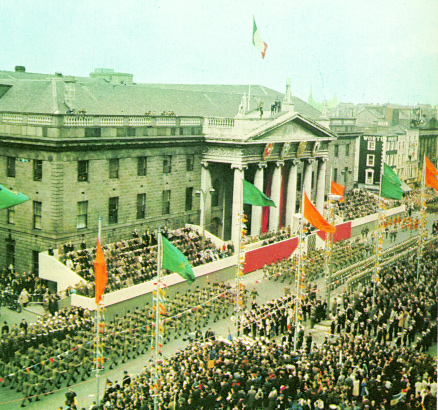
The military parade passes the GPO on Easter Sunday, 10 April 1966. (Cuimhneachán 1916–1966)
The timing of the 50th anniversary of the Easter Rising was significant. As taoiseach, Seán Lemass was anxious to secure Ireland’s future within the European Economic Community (EEC) and had attempted to improve relations with both Britain and Northern Ireland. He constantly brought to the fore images and references to ‘modern’ Ireland so that the fiftieth anniversary commemoration was as much about the act of looking forwards as backwards, requiring a delicate negotiation between tradition and change. Nowhere was this more apparent than in how the commemoration was communicated to the youth of Ireland, a group which represented the nation’s future but which had mixed reactions to the lessons of the past.
In contrast to the Republic, the commemoration of the fiftieth anniversary of the Easter Rising in Northern Ireland was not an official state-sponsored event. Instead, the fiftieth anniversary of the Battle of the Somme enjoyed official status there in the summer of 1966. Only the nationalist community celebrated the anniversary of the Rising, and the decision by the Northern Ireland government not to place a blanket ban on the Easter celebrations met with some opposition from within unionism. The nationalist community appeared to be at one in viewing the message of 1916 in terms of reunification. The conflict instead lay in the contrasting interpretations of the Rising within the nationalist and unionist communities.
Commemoration in the Republic
‘The Rising of 1916 belongs to nobody if it does not belong to the people of Ireland’, The Kerryman wrote in 1966. ‘Some of them are proud of the Rising, others would disown it if they could, and there are quite a number . . . who are so indifferent that talk about it bores them. Nevertheless the 1916 Rising is theirs.’ The golden jubilee commemoration presented itself as both an obligation and an opportunity. For many the virtue of the Easter Rising was not in doubt. However, events cannot be commemorated without being assigned new meaning, and the anniversary forced clarification of what the Rising represented as a historical event and, more contentiously, of its continued meaning or relevance in 1966.
Seán Lemass was acutely aware of the need to fashion the commemoration into a shape that would serve the needs of contemporary Ireland. The taoiseach attempted to set a tone that honoured the men and women of 1916 without adding fuel to divisions over the Republic’s continued failure to deal with the Irish language, partition and emigration. Lemass urged harmony as a central ambition of the jubilee. It was essential in achieving the overall objectives of galvanising the population at a time of economic uncertainty while at the same time using the commemoration to showcase the successes of independent Ireland.
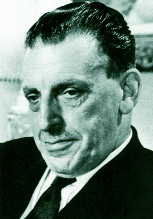
Taoiseach Seán Lemass -‘constantly brought to the fore images and references to “modern†Ireland’. (G. A. Duncan)
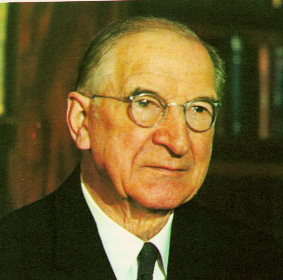
President Eamon de Valera – ‘We cannot adequately honour the men of 1916 if we do not work and strive to bring about the Ireland of their desire’. (Cuimhneachán 1916–1966)
However, harmony was something that Lemass preached better than he practised. In February 1965 a committee was formed to oversee the organisation of the commemoration. Its members included Fianna Fáil TDs, civil servants and individuals associated with the Rising who were chosen by Lemass, and was open to the criticism that it was not representative of cross-party opinion. The fear was that the memory of the Rising and the future of Fianna Fáil would become so intertwined that the latter would become electorally unbeatable for the foreseeable future. Moreover, the concern was not unfounded that the commemoration committee would, inadvertently or otherwise, become part of the campaign to re-elect President de Valera.
Nevertheless it was also true that Fianna Fáil, as the government party, had to contend with negative publicity, disputes over the ownership of the legacy of the Rising and questions over the failures of the independent state. The politics and personalities of the Rising meant that, 50 years later, educationalists, artists, the labour movement, Irish language groups and some Republicans were particularly vocal about their sense of betrayal.
Female relatives of the signatories were also attuned to the idea that leverage is the application of strength at its most advantageous point. Margaret Pearse announced a month before the commemoration that she might bequeath St Enda’s to a religious order rather than to the nation because ‘conditions have changed’, and Tom Clarke’s widow threatened to go public with her anger at the description of Pearse as ‘the first President of the Provisional Government’, with the view that ‘surely Pearse should have been satisfied with the honour of commander-in-chief when he knew as much about commanding as my dog’. Most public in their dissent were the sisters of Seán MacDiarmada, who shunned the official commemoration for their brother in Kiltyclougher and were joined by a much larger crowd at an alternative parade in the town, coordinated by the National Graves Association.
It was an unofficial gesture too that created the iconic image of the jubilee year—the blowing up of Nelson’s Pillar in March. The explosion accentuated the fear that the IRA would add violence to the celebrations the following month. Violent incidents were in fact few and the week of celebrations passed off peacefully. The centrepiece of the official commemoration was a military parade down O’Connell Street, watched by 600 veterans in the viewing stand and approximately 200,000 onlookers in the city centre. Pageants, religious services and art exhibitions were held, and RTÉ dedicated much of its schedule during the week to programmes related to the Rising. Throughout the country many local commemorations were held, and these largely adhered to the format of Mass, parade, speeches and the reading of the Proclamation, followed by a cultural event such as a pageant or concert.
A more general celebration of independence
In the Republic the meaning of the Easter Rising was blurred with a more general celebration of independence. The Rising could then be invoked to urge the public to recommit themselves to working for the needs of the nation. Therefore Lemass could describe the jubilee as ‘a time of national stocktaking, as well as for trying to look ahead into the mists of the future to see the right road leading to the high destiny we desire for our nation’. In his presidential address at Easter 1966, de Valera asserted: ‘We cannot adequately honour the men of 1916 if we do not work and strive to bring about the Ireland of their desire’.
The Rising was thus placed in a continuum of the struggle for Irish freedom, which, de Valera reminded his listeners, was not political freedom alone, but ‘an enabling condition for the gradual building up of a community’. A rhetorical emphasis on ‘freedom’ and ‘independence’ facilitated the inclusion of the unveiling of statues to Robert Emmet and Thomas Davis as part of the official commemoration of 1916 and the dedication of memorials to disparate Republicans across the country. Also part of the official programme were the opening of the Garden of Remembrance and Kilmainham Jail Museum.
The sense in which 1966 was seen as a bridge between past and future stimulated a vague spirit of ecumenism among some civil servants. The suggestion was floated that the opening of the Garden of Remembrance should not include a blessing ceremony that would single out one denomination for the honour.
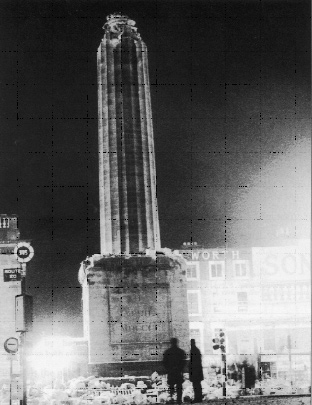
The blowing up of Nelson’s Pillar in March 1966-an unofficial gesture that created the iconic image of the jubilee year. (Irish Times)
The idea was easily and swiftly quashed by Archbishop McQuaid but invitations were sent to various church leaders, with the intention of giving them prominence on the ceremonial platform. In fact, only the Church of Ireland was officially represented: the Society of Friends could not, ‘in good conscience, take part in the commemoration of any military action’; the chief rabbi regretted that it coincided with Passover; and the chairman of the Dublin district synod of the Methodist Church feared that attendance ‘might cause embarrassment in other places’.
This was a diplomatic reference to Northern Ireland. The ‘other place’ not only caused concern because of the fear that the commemoration would provoke violence; it existed as a constant reminder that the struggle for Irish freedom was not yet complete. The North would soon provide a more uncomfortable context for the commemoration of violent Republicanism. Indeed, the northern conflict would cast its shadow over the writing of Irish history for the next 40 years.
1960s youth and 1916—a new message
The rapid economic development experienced by the Republic during the ’sixties brought accompanying social and cultural changes, resulting in an identity crisis for a nation that had spent decades in self-imposed isolation. Such changes were most evident in contemporary youth, the social grouping most receptive to change. In line with other ‘modern’ nations, the Republic began to place its hopes for the future in this newly invested-in and more dynamic younger generation. Considering this, in what way would 1916 be presented to youth in 1966? At a time when the nation’s future was being viewed in economic and international terms, how was the nation’s past patriotism to be translated for a youth who would operate in this new context?
Writing in 1962, Dr W. D. Philbin contended that the reason why Irish patriot instincts were not positively engaged was because people did not feel that patriotism belonged with everyday work. ‘We have read and sung about it in relation to military conflict and political struggles,’ he explained, ‘we cannot visualise it in any other settings. Our emotions are not worked on by economic difficulties. There is no glamour in fighting an adverse balance of trade.’ In an attempt to positively engage the patriotism of the younger generation, commemoration activities were to be used to inspire a new type of patriotism, one necessary for the new national project. Speaking at a jubilee Mass in Kilkenny, Revd Daniel Collier asserted that ‘the most important thing in 1916 was not the fighting but the spirit which inspired it’. The occasion would provide an opportunity to instil the ‘spirit’ of the men of 1916 in the nation’s youth, and in 1966 this oft-cited ‘spirit’ represented personal achievement, excellence, initiative and unity of purpose.
Cultural nationalism saw a resurgence as writers and artists were encouraged to take part in the commemoration of a rising whose leaders had themselves excelled in these fields. The state sponsored competitions in literature, music and art. Children were invited to write essays, in Irish or English, entitled ‘An Easter Week veteran tells his story’ or ‘1916–2016’. A pageant, ‘Aiséiri—Glóir Réim na Cásca’, was staged in Croke Park, while the GAA commissioned their own pageant, ‘Seachtar Fear, Seacht Lá’, both directed at youth. The 17th of April was named ‘Lá na nÓg’ and 20,000 students from 200 Dublin schools marched to Croke Park for a special performance of ‘Aiséiri’. On 22 April the Proclamation was read in schools throughout the country. Special Masses were held for schoolchildren, which were preceded by a parade to the local church.
These activities were typical of state-sponsored cultural or commemorative events in that they espoused the ideals of a Gaelic Ireland coupled with a religious dimension, but there was a change of emphasis in 1966. While these activities were necessary to revive the ‘spirit’ of 1916, it was hoped that, once revived, it could be directed in a more practical direction, to inspire constructive patriotism. The boys and girls of Holy Faith Convent, Celbridge, for example, were informed that the Proclamation was a call to each one of them to love their country, and that while this could be done by speaking the Irish language or by fostering a love of Irish music, it could also be done by buying Irish goods. It was further suggested to them that, in the jubilee year, they could best honour the men who died by showing a greater pride in their own town, by refraining from littering the streets with sweet papers and by seeing that others did likewise. Fr Larkin in Galway exhorted the younger generation to study closely the character of the 1916 men. ‘Good patriots of today were those’, he said, ‘who did their work well for Ireland; those who spoke Irish; and those who bought Irish.’ The type of patriotism needed in 1960s Ireland was not one that had many parallels with that of the past, glorifying as it did heroic failure. Youth would have to be active participants in the national project. Only practical accomplishments, rather than heroic failure, would suffice.
However, the fact that commemoration activities took traditional forms meant that the switch in emphasis from the 1916 leaders as heroic soldiers to focused overachievers may well have been lost on many, particularly schoolchildren.
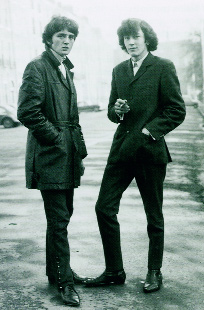
Mid-‘sixties Irish ‘Mods’ – the 1960s saw the arrival of the teenager in Ireland. (Evelyn Hofer)
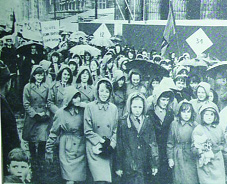
Schoolchildren participating in ‘Lá na ní“g’, 17 April 1966.
Heroic tales would continue to resonate with younger children more readily than rational discourses. On the other hand, older youth, teenagers and those in their early twenties would identify with neither. With the exception of the television programme Insurrection, itself presented on the newly arrived television and depicting the events of the Rising in the context of a 1960s newsroom, the message of the commemorations, both mythical and rational, were largely lost on older youth.
The 1960s saw the arrival of the ‘teenager’ to Ireland at a time when working youth had increased levels of disposable income provided by the industrial wage. This income was spent on leisure activities more reflective of British and American popular culture. Traditionalists charged Ireland’s youth with imitating other cultures, and 1966 provided an opportunity to address what many saw as a cultural crisis. P. Ó Braonáin of the GAA asserted that ‘it is very important that we should get across to our youth the reason why we should play Gaelic games, dance Irish dances, and sing Irish songs. It is amazing that in 1966 we are more or less apologising to people because of our aims and ideals.’ De Valera hoped that the Irish language would be the mechanism that would prevent the nation from sinking into an ‘amorphous cosmopolitanism’ and that contemporary youth would take its revival as their task. However, the historic task of the 1966 generation, as defined by Seán Lemass, was to forge an Ireland that could compete effectively in the European common market, and success in this field could only undermine the traditional aspects of Irish society as its culture began to reflect the international trends of other modern nations.
Commemoration in Northern Ireland
In a BBC production of This Week in July 1966, which focused on ‘the Ulster problem’, the reporter asked a lady in a housing estate in a mainly Catholic area of Belfast whose windows had been broken in an attack on her home: ‘Surely nobody throws petrol bombs in Ireland in 1966?’ Unfortunately political violence did make a return to the streets of Belfast in 1966, and it was against this backdrop that the 1966 commemoration of the 1916 Rising took place. The commemoration in Northern Ireland was by its unofficial nature very different to that staged by the Irish government in the South. It was nonetheless enthusiastically organised and attended across Northern Ireland, with the largest events taking place in Belfast. As early as August 1965 a 1916 commemoration committee was established. A Republican, Liam McMillan from Belfast, was elected as organising secretary. The commemorative events mostly took place over two weekends, starting on Easter Sunday, 10 April 1966, and usually included special Masses, parades in towns or to Republican plots, lectures, reunion dinners and concerts. Republicans and the GAA played a major role in the organisation and hosting of the commemorative events. At Casement Park, Belfast, the ‘Seachtar Fear, Seacht Lá’ pageant from Croke Park was recreated. The annual parade on Easter Sunday to the Republican plot at Milltown Cemetery, Belfast, reportedly had 5,000 participants and 20,000 onlookers. On the following Sunday a second parade along the Falls Road to Casement Park was attended by some 70,000 people.
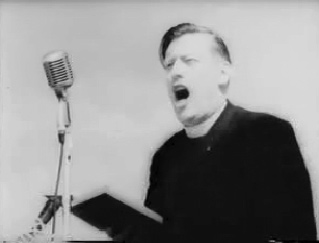
Revd Ian Paisley addressing an open-air meeting in 1966. (British Film Institute)
In Coalisland it was reported that 20,000 people and 20 bands attended the celebrations. The parades usually included past members of the IRB and the old IRA. Members of the Nationalist Party attended some parades but speakers were mainly Republican.
A number of themes were present in the speeches delivered as part of the commemorative celebrations. The issue of the Irish language was raised by a number of Catholic clergy, such as Revd MacEntaggart from Dungannon. The GAA reiterated its pride at being part of the commemoration and having been associated with the republican tradition in Ireland. The chairman of the County Down GAA board, George Tinnelly, said that he believed that the men of 1916 could best be honoured by ‘encouraging our youth to learn and speak our native language, dance our native dances, play and take part in the pastimes of our native land’.
The ideal of unity was very much to the fore in the speeches delivered by Republicans.
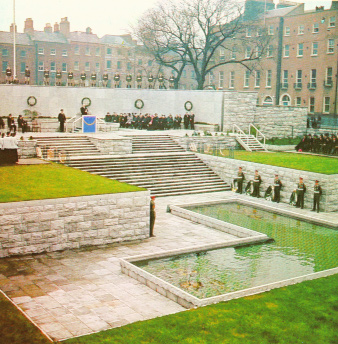
The opening of the Garden of Remembrance
Speaking in Dungiven, Neil Gillespie said: ‘We are not here to celebrate the setting up of a statelet or two. We are here to appeal to the people of Derry to follow the teachings of these men.’ At Toomebridge, Co. Antrim, Kevin Agnew argued that Pearse and the other 1916 veterans had not died for two Irelands, and in a remark to the leaders in the South he said that if they believed that the Republicans in the North would be content to spend their lives under the Union Jack and in half-slavery, then they were mistaken. Speaking in Coalisland, Ruairí Ó Brádaigh called on the youth to join voluntary organisations and to be prepared to fight for the freedom of their country if that became necessary.
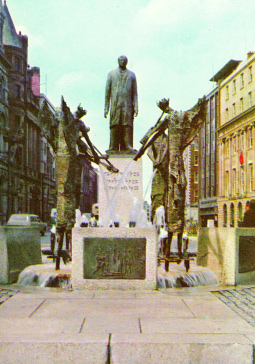
The unveiling of Edward Delaney’s monument to Thomas Davis was part of the official commemorations. (Cuimhneachán 1916–1966)
Reflecting the unofficial and divisive nature of the Easter commemoration in Northern Ireland, there was some dissatisfaction at the decision by the unionist government not to enforce a blanket ban on the celebrations and instead to allow commemorative events to proceed in nationalist areas. Some unionists believed that celebrations of the Easter Rising should not have been allowed in Northern Ireland at all and pressurised the prime minister, Terence O’Neill, on the issue. Many Orange Order lodges expressed disapproval at the commemoration and informed the prime minister that they were supported by local branches of the newly re-formed Ulster Volunteer Force (UVF) in their demands for a ban. Unionists opposed the Easter commemorations for a number of reasons. The fear of IRA violence was real and the flying of Irish tricolours was opposed. Many unionists objected to the Easter Rising being celebrated in Northern Ireland as it was ‘repugnant’ to the majority of the people.
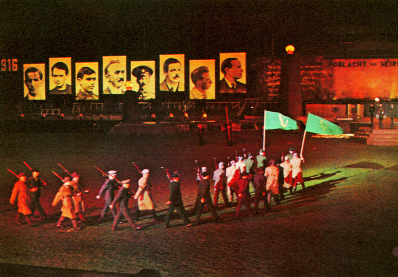
The pagent Aiséiri-Glí³ir Réim na Cásca being performed in Croke Park. (Cuimhneachán 1916–1966)
The fact that the Rising took place at a time when so many Irishmen died taking part in Britain’s war in Europe affected unionist attitudes. The contrast between unionist and nationalist attitudes towards and experiences of history was highlighted by the participation of the nationalist community in the Easter commemorations and unionist involvement in the state commemorations of the Somme in the summer of 1966.
1966 was also the year when the UVF declared war on the IRA and O’Neill was forced to ban the UVF. Its reorganisation came in the midst of wider unrest within unionism directed at O’Neill and led mainly by Revd Ian Paisley, who came to the fore of Northern Ireland politics in 1966. He was the most vocal in opposing the celebrations in Northern Ireland. He organised a counter-demonstration in Belfast as well as a ‘thanksgiving’ service for the defeat of the 1916 rebels. His demonstration march to the Ulster Hall was reported to be 5,000 strong. The issue of the commemoration became one around which dissatisfaction with O’Neill was mobilised, particularly by Paisley.
Thus in contrast to the commemoration celebrations in the Republic, where issues of contention revolved around what was being commemorated, by who and how, in Northern Ireland tension existed because the commemoration was not supported by the majority of the people there and not state-sponsored. But despite the wider issues of Northern Ireland politics in 1966 within which the commemoration became entangled, for nationalism its importance was clear. The relevance of the message of 1916 in 1966 was the objective of unity. The only conflict remained over how this should be achieved, whether through peaceful or violent means.
Roisin Higgins, Carole Holohan and Catherine O’Donnell are participants in a cross-border research project, funded by the Higher Education Authority (HEA), on the fiftieth anniversary of the 1916 Rising at University College Dublin and Queen’s University, Belfast.
Further reading:
B. Girvin and G. Murphy (eds), The Lemass era: politics and society in the Ireland of Seán Lemass (Dublin, 2006).
T. Hennessey, The origins of the Troubles (Dublin, 2005).
M. Mulholland, Northern Ireland at the crossroads: Ulster Unionism in the O’Neill years, 1960–9 (Basingstoke, 2000).
M. Ní Dhonnchadha and T. Dorgan (eds), Revising the Rising (Derry, 1991).
















